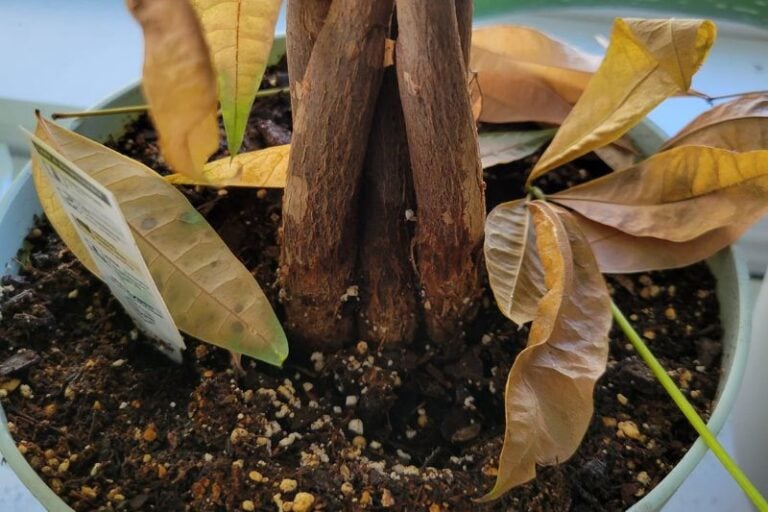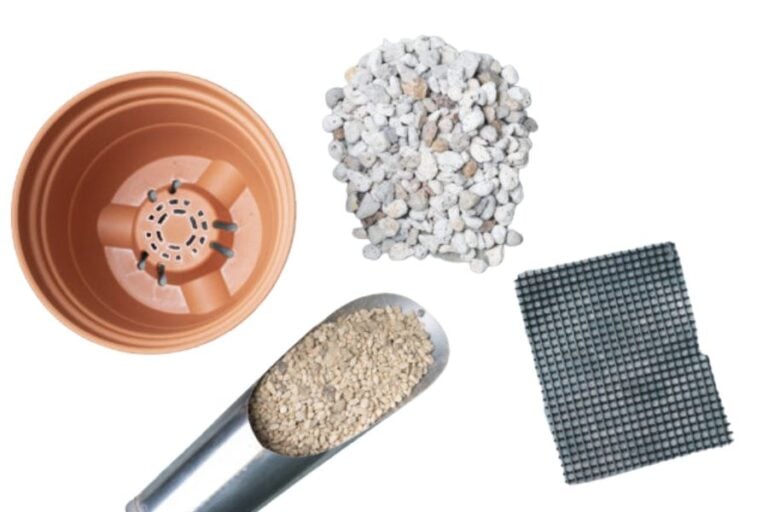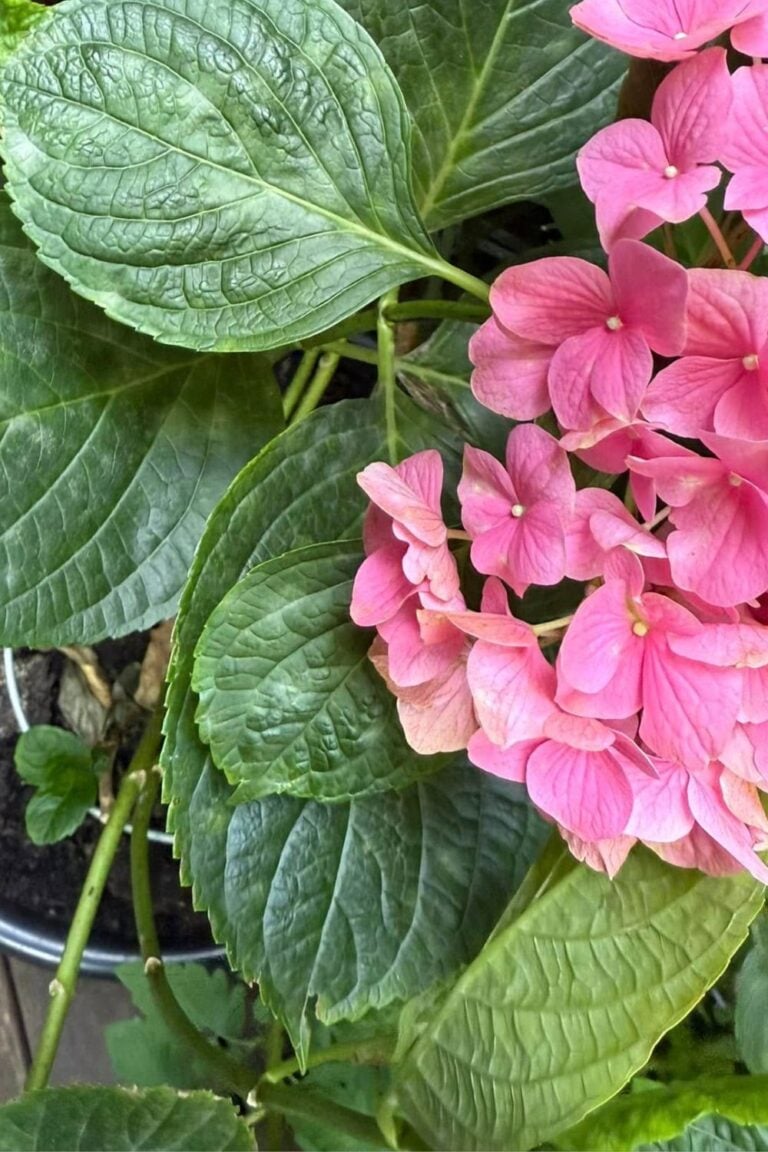I bet you’re wondering how to water an orchid, huh? Or maybe, how and when to mist it? Perhaps you’re worried that overwatering has caused your orchid to develop root rot.
I understand these concerns, and let me tell you, correct watering is essential in orchid care. The majority of orchid deaths are due to root rot from overwatering.
With the right knowledge, you can bloom this beautiful plant without a hitch. Stick with me, and all your questions about watering orchids will be answered, and you’ll enjoy your flower for much longer!
Contents
- Here’s How To Water Your Orchid Correctly
- Why Misting Your Orchids Is A Top Tip! Let’s Unpack The Three Reasons
- How to Water Your Orchids: Seasonal Frequency Explained
- Five Critical Points To Remember When Watering Orchids!
- A Couple of Things to Keep In Mind When Feeding Your Orchid
- Orchids Die Due To Root Rot Caused By Excessive Watering Or Over-Fertilization
- Signs That Your Orchid Needs More Water
- Common Questions about Watering Your Orchid
- Watering Your Orchid: Less Is More!
Here’s How To Water Your Orchid Correctly
Indoor orchids’ water requirement depends on temperature, humidity, season, and growing medium composition.
Water your orchid with soft and disinfected watering with a slightly acidic pH and a temperature between 35-36 °C.
Here are the steps:
- Wait until the sphagnum moss or bark in the pot has completely dried out.
- Use plenty of water, enough to see it flowing out of the bottom of the pot.
- Regularly empty any water that has been collected in the tray.
When watering an orchid you’ve received as a gift, always remove the wrapping first. If the wrapping stays on, the water that flows into the tray may get trapped, and the orchid won’t be able to breathe.
If you’d prefer to keep the wrapping on for aesthetics, simply cut a small hole in the bottom so the water can drain. Sure, the wrapping looks nice, but let’s prioritize orchid care!
Overwatering, especially when the potting material is already damp, is a common cause of orchid death. One way to prevent this is by sticking a chopstick into the potting material to test if it’s dry.
If the tip of the chopstick is wet, it’s not time to water yet. This simple trick can help you avoid overwatering. Remember, choose one spot to stick the chopstick to avoid damaging the roots.
The best time to water an orchid is when the plant has completely dried.
Why Misting Your Orchids Is A Top Tip! Let’s Unpack The Three Reasons
This practice involves spraying water on the plant’s leaves, which benefits orchids in several key ways:
1- Orchids prefer humid conditions
Orchids originate from tropical rainforests such as those in Taiwan, the Philippines, and Malaysia, where they’re used to warm and humid environments.
In these regions, orchids are often grown in plastic greenhouses for optimal conditions. By misting your orchids, you help mimic their natural environment, preventing them from getting too dry or cold.
2- Orchids Absorb Moisture From The Air
In their natural habitat, orchids usually grow on trees or rocks, drawing moisture directly from the surrounding air rather than soil.
In indoor settings, orchid pots are often filled with sphagnum moss or bark to help retain moisture and ensure proper ventilation.
Misting orchids create a more natural condition, helping them absorb water directly from the air, like in the wild.
3- Orchids struggle to absorb nutrients through their leaves
Orchids find it difficult to absorb nutrients through their leaves, particularly during photosynthesis when their stomata, or leaf pores, don’t easily open.
Misting orchids, particularly in the morning when their stomata are said to open (around 10 am), could help enhance their water absorption capacity, thus improving their overall health and growth.
Effective Misting Techniques for Watering Your Orchids
I’ll explain the best ways to use misting when watering your orchids. If the humidity falls below 50% or during dry winter, misting water on your orchid’s leaves can be beneficial.
However, misting isn’t necessary for orchids, so it’s only for those who want to nurture their plants with love carefully. Here’s how to effectively mist your orchids:
- Mist from the back of the leaves: When misting your orchid, aim at the back to avoid getting water directly on the flowers. Water droplets inside the central pistil can accumulate debris and potentially cause bacteria and mold growth. Ideally, misting should be done in a fine spray form.
- Do it in the morning: It’s best to water or mist your orchids and let them get moderate sunlight afterward. As the temperature drops in the evening, it becomes more difficult for orchids to absorb water. To ensure that water droplets from misting don’t stay too long, performing this activity in the morning is ideal. The timing of watering is important, isn’t it?
- Ensure not to wet the potting mix: Avoid getting water on the orchid’s mix when misting. If the potting mix gets wet, it becomes hard to determine when to water again. So, ensure that you’re only wetting the leaves of your orchid.
Take a look at this guide on how to dial in the perfect humidity levels for your indoor orchid.
How to Water Your Orchids: Seasonal Frequency Explained
Orchids can be a bit fussy about water: too much or too little isn’t good. You might find the balancing act tricky, but checking whether the potting mix is dry is a reliable way to gauge when to water.
Since the USA has four seasons, the time it takes for the potting mix to dry varies. Let’s go through how often you should water your orchids during each season:
- Spring and Fall: When a half inch of the substrate is dry.
- Summer: Give a 30-minute soak every 1-2 weeks.
- Winter: When the top 2-3 inches of potting medium is dry. You can use your finger or a pencil to gauge the moisture level.
1- Watering Frequency in Spring & Fall
A good amount ensures the water penetrates the plant well by watering until it drains from the bottom of the pot. As the seasons change, monitor the temperature shifts and adjust your watering accordingly.
2- Watering Frequency in Summer
Aim to water your orchids about once every two weeks. The intense summer heat can dry out the plant quickly so you might need more water, give the plant pot a 30 min soak, and it will be well-hydrated and good for another two weeks.
After the rainy season starts, avoid leaving your orchid in a high-temperature area to avoid excessive humidity.
Once the rainy season is over, be careful of dryness and ensure the orchid isn’t directly in the path of air conditioning or a fan.
3- Watering Frequency in Winter
It’s best to play it by ear in winter when watering your orchids. Only give them a drink when the top 2-3 inches of potting medium is dry as a bone.
You can easily check this by sticking a pencil or toothpick into the medium. If it changes color, hold your horses; your orchid’s not ready for a drink just yet. This little trick can be a lifesaver in winter when orchids are at high risk for root rot.
I’ve never been one to stick to a rigid schedule. It’s all about feeling it out, using your best judgment.
Testing the moisture level and watering accordingly – that’s the golden rule in my book! It’s a great way to keep your green friends happy and thriving.
Pay attention to temperature control during this season. Be sure to wait until the potting mix is completely dry before watering.
The water should be tepid, between 68 and 95 °F (20-35 °C). Be careful not to chill the orchid by using too cold water, as it can stress the plant.
Five Critical Points To Remember When Watering Orchids!
Proper watering is essential for your orchids to bloom beautifully and for an extended period. Here are the five points you need to remember when watering your orchids:
1- Water Only When The Potting Material Is Completely Dry
Do not water your until the potting material, whether sphagnum moss or bark, is completely dry.
Overwatering when the potting material is still damp could prevent the roots from absorbing water, leading to root rot.
To check if the bottom of the pot is dry, it might be helpful to stick a chopstick into the roots and see if it comes out wet.
2- Water Your Orchid From The Base
When watering your orchid, ensure you provide enough water to reach all parts of the plant, starting from the base. Don’t just dribble water over the surface of the potting material.
You should soak it until water starts flowing from the pot’s bottom. Water each plant at its roots if you have multiple orchids in a pot. Always double-check that the water has penetrated throughout!
3- Always Discard Any Water Remaining In The Saucer
After watering your orchid, always dispose of any leftover water in the saucer. If you leave water standing, it could create a humid environment, leading to mold or bacteria.
To keep your orchid healthy, let’s ensure not to create an unpleasant environment.
4- Water in the Morning
The best time to water your orchid is in the morning. Why, you ask? Well, it’s simply because that’s when it’s easiest for the water to be absorbed.
As the temperature drops in the evening, the plant’s ability to take up water weakens.
So, if you can, give your orchid its drink in the morning, and then let it bask in moderate sunlight. Trust me, your orchid will thank you for it. Let’s keep up the good work in caring for our plants!
5- Use Tepid Water in Winter
When it comes to watering your orchid in winter, I recommend using tepid water, around 68 °F (20 °C). Too cold water can chill the entire plant, causing damage.
During the winter dormancy period, paying close attention to the water temperature you’re using is important.
A Couple of Things to Keep In Mind When Feeding Your Orchid
1- Generally not Necessary
Believe it or not, orchids generally don’t need fertilizer. In the wild, orchids grow in environments with almost no fertilizer.
Giving fertilizer to a weak plant could put more stress on it, potentially further damaging the roots.
Sure, a small amount of fertilizer can promote growth but don’t fall into the trap of thinking that more fertilizer equals a healthier plant. No need to go overboard with the feed!
2- If You’re Going to Use It, Do It From May to September
If you’re set on using fertilizer, wait until the warmer months, from May to September, once you’ve confirmed new roots have appeared.
A weekly dose of liquid fertilizer or nutrient solution should do the trick. After feeding, keep a close eye on your orchid to ensure it’s not losing vitality.
Orchids Die Due To Root Rot Caused By Excessive Watering Or Over-Fertilization
You wouldn’t be stretching the truth to say that the pot’s heat and humidity can affect the plant’s health. If you leave an orchid in poor shape, root rot can progress, and the whole plant can wither.
Even if root rot has set in, there’s still hope if you notice it early and repot the orchid. Let’s aim to catch these issues early for a long and healthy life!
Four signs your orchid needs repotting: To keep it from dying, it’s crucial to refresh its growing environment by repotting it. Here are four signs that your orchid might need a new home:
1- The leaves are wrinkled
One common sign in orchids is wrinkly, droopy leaves. If root rot has set in, the orchid can’t absorb enough water or nutrients, causing the leaves to look less than perky.
Keep a close eye on the leaves’ condition to spot root rot symptoms.
2- The leaves are changing color
If the orchid’s roots start to rot, the leaves will start to change color. Like wrinkly leaves, the discoloration indicates that the plant can’t absorb enough water or nutrients.
Once a leaf has changed color or wrinkled, it won’t bounce back, so you should consider removing it and repotting the orchid.
3- Mold is growing on the roots
If mold has started to grow on the roots, it’s time to repot. During the rainy season or when the pot’s aeration is poor, you might see white deposits or black spots on the stem or roots.
If mold grows on the orchid, it can cause diseases, so immediate action is required. While healthy roots are left, repot the plant and remove the moldy parts.
4- There’s a foul smell
As root rot in an orchid progresses, it gives off a musty odor similar to mold. The leaves and stems will start to droop, and it’ll be clear the plant isn’t doing well.
If the roots get too wet, the roots will start to die, basically suffocating the plant. Before the plant dies, consider repotting immediately.
Signs That Your Orchid Needs More Water
When your orchid isn’t getting enough water, one of the most noticeable signs is that its leaves lose vitality.
Plants need water for photosynthesis; without it, they lose their green color. Here are some signs of leaf abnormalities that are easy to spot:
- The leaf surface has wrinkles
- Leaves become soft and droopy
- Leaves seem thinner
- Leaves turn yellow
Especially in the summer, your orchid might get dehydrated easily, even if you’re watering it sufficiently. The high temperatures can cause water to evaporate quickly.
When heat waves hit, you’ll need to get creative—consider moving your orchid to a shaded or more comfortable spot.
Common Questions about Watering Your Orchid
Here are answers to some common points of confusion about watering your orchid.
What should I do if I overwatered my orchid?
For a while, avoid watering the plant and empty any water that’s collected in the saucer beneath it. Wait to water again until the planting medium has completely dried out.
If you plant your orchid in bark and use a plastic pot, the humidity will increase, reducing the watering frequency compared to using a clay pot. This could be worth considering if you cannot care for your orchid frequently.
Why does one of the three stems of my orchid look unhealthy?
The water might not soak into the pot’s middle when watering your orchid. Ensure that moss isn’t obstructing the water, and when you water, make sure it permeates to the center of the plant.
What happens when an orchid dies?
If your orchid’s roots have turned black and are mushy and emitting a foul smell, the plant has likely died. It’s sad, but the right thing to do is dispose of the dead orchid using local waste disposal rules.
Watering Your Orchid: Less Is More!
Knowing the correct watering technique is crucial to making your orchid’s flowers bloom longer.
The frequency of watering will change based on the climate and location of the plant, but a golden rule is to water only after the planting medium has completely dried out.
The primary cause of an orchid dying is overwatering or over-fertilizing, which leads to root rot. Orchids are known to live for over 50 years.
Understanding the correct way to care for your orchid, including how to water it, should help you enjoy its blooms for a long time.









